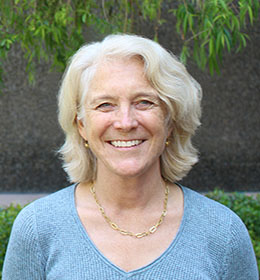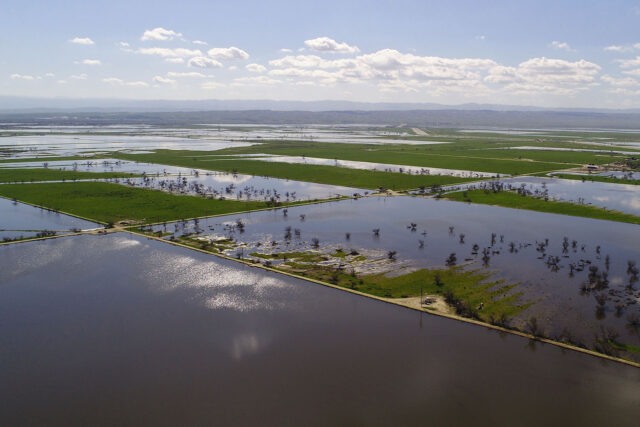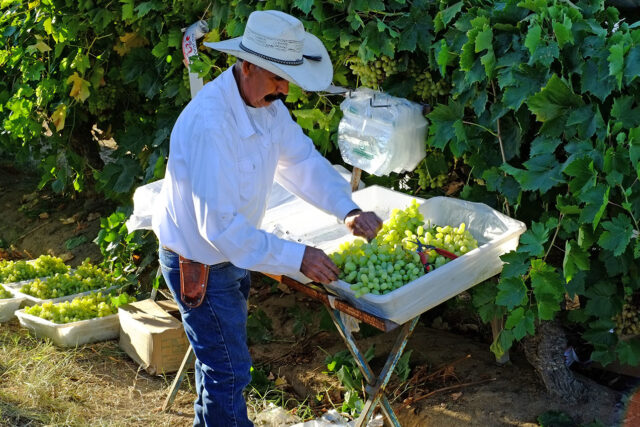California’s largest farming region faces two linked challenges: balancing groundwater supply and demand in overdrafted basins, and addressing water quality in the region’s aquifers. We talked to Ashley Boren, executive director of Sustainable Conservation, about tackling these issues in the San Joaquin Valley.

PPIC: Talk about your organization’s efforts in groundwater recharge.
Ashley Boren: We’re focused on trying to get stakeholders in the San Joaquin Valley to think about doing more recharge―and expanding recharge approaches―to make a dent in the overdraft problem. Climate forecasts show that California will have fewer but more intense big storms in the future, with a lot of water coming at once. When that water comes out of the Sierra, we need to let it spread out across the land—including on suitable farmland that can handle large volumes of water and has good soils for recharging groundwater. There’s a lot of opportunity to do more recharge.
We’ve definitely seen an uptick in interest among farmers in recharging on their land—the state’s Sustainable Groundwater Management Act has been a huge driver for that. We’re trying to provide tools to help farmers and irrigation districts recharge as much as possible. For example, we’ve got some demonstration sites where we help growers who accept water onto their land to measure the results and impacts. We use our findings for education and outreach with other farmers. And with our partner the Earth Genome, we’ve created a tool that runs scenarios on how landowners and water agencies can optimize recharge using a combination of dedicated recharge basins, fallowed land, and active cropland. It combines publicly available information on things like soil types with water agencies’ proprietary information on canal capacity and location. It’s cloud-based and easy to use.
We’ve also joined the Department of Water Resources’ Flood-Managed Aquifer Recharge effort, which explores ways to marry flood management with groundwater recharge and habitat creation to achieve multiple benefits. There are more than 200 stakeholders involved so far.
PPIC: What needs to happen to scale up recharge?
AB: Several things need to happen. Improving conveyance infrastructure is the big one, so we can move water to where it’s needed most and where conditions for recharge are suitable. We need more landowners willing to accept water on their land, and also more recharge basins. And we need to figure out how much water is available for recharge by watershed, so water agencies know what they’re working with and how much they can capture.
We’re collaborating with the State Water Board to enhance current regulations that would greatly boost recharge efforts, and exploring ways to expedite permitting while ensuring existing water rights are honored and environmental water needs are covered.
PPIC: You’re also working with dairies to help them address water quality issues. What are key lessons from this work?
AB: We’ve been working with San Joaquin Valley dairies on how to manage manure to protect water quality for nearly 20 years. We’re helping dairies apply nutrients more precisely to their feed crops in order to reduce nitrate leaching into groundwater. But reducing the use of manure on croplands means dairy farmers have a lot of leftover manure. Manure is a valuable resource, so the industry is trying to figure out how to create products with excess manure that can be exported off farms to avoid nitrate leaching. Studies indicate we will have to export up to 40% of the valley’s manure to comply with water quality laws. The good news is the industry is actively working to figure out the market for manure products.
We’re also really excited about a partnership with the irrigation company Netafim, supported by the USDA, which allows dairies to apply their nutrient-rich wastewater very precisely to their feed crops to limit leaching of the excess nitrogen into groundwater. So far we’ve seen up to 40% less water and up to 75% less nitrogen applied to fields at our demonstration projects. An added bonus is this system also reduces nitrous oxide emissions into the air by 90%. If dairies could get credit for reducing this very harmful greenhouse gas, it could help pay for installation of the systems.




